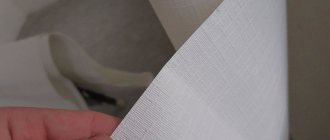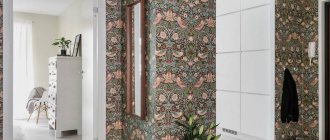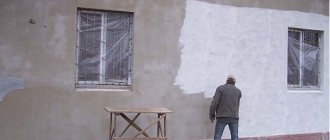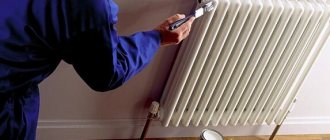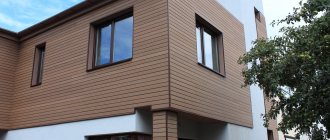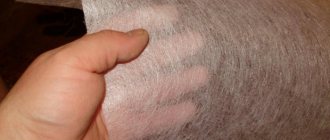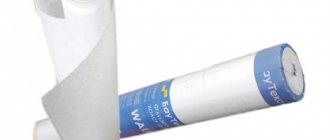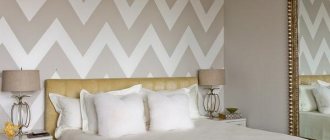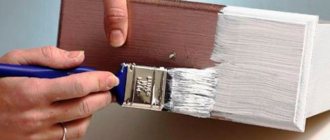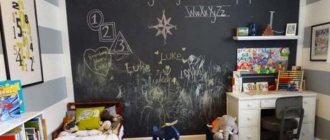Vadim
7529 0 2
Vadim June 12, 2017
What is non-woven wallpaper for painting, how to choose it, how to glue it, what kind of paint is needed for non-woven wallpaper and how is it applied? All these questions swarm in the head of a home master. Let's go together all this way from the idea to the final result, and at the end I will answer the 5 most popular questions on this topic.
Paintable non-woven wallpaper is an excellent solution for most rooms.
Paintable wallpaper: advantages
Wallpaper for painting is chosen by practical people who were able to appreciate all the many advantages of this type of finishing:
- the ability to repaint the surface of the wallpaper, thereby quickly updating the interior without unnecessary hassles such as removing the coating, preparing the walls, etc. It is enough to choose a suitable shade of paint;
- sufficient variety . Wallpaper for painting is usually produced in white, milky, or beige shades; wallpaper in bright colors is less common. The surface can be either smooth or embossed , the pattern can be absolutely anything, from imitation plaster to floral patterns;
- the ability to paint the wallpaper in absolutely any shade you want;
- dense material can hide small unevenness in the walls .
Paper
Each variety has its pros and cons. Particularly noteworthy are paintable paper wallpapers, which are suitable for any walls, even if they are not entirely smooth.
The main disadvantages include the least number of opportunities to repaint the walls after gluing them. However, paper wallpaper is the most economical option. In addition, they are easy to glue, they are well ventilated and are rarely subject to fungal damage and do not become moldy.
Typically, paper wallpaper for painting is two-layer, having sufficient density and thickness. Due to the fact that this finishing material is impregnated with a special composition, the products have excellent water-repellent qualities that are not lost even after repeated painting of the walls.
They are suitable not only for walls, but also for ceilings, which allows you to create an original seamless surface.
Paintable wallpaper: cons
This type of finish also has disadvantages:
- the number of new layers of paint is limited , ranging from approximately 4 to 15. The number can be indirectly judged by the depth of the relief. If you repaint the wallpaper too often, you can lose the texture;
- some types can hardly be called budget;
- When painting some wallpaper, difficulties may arise, so you will have to call a specialist, but in most cases you can do it yourself.
These are all general characteristics; specific properties will depend on the material from which the wallpaper is made.
Can they be painted: pros and cons
Non-woven wallpaper can be painted; for this purpose, special rolls are produced for applying paint and varnish.
Wallpaper of this type is made from natural cellulose, which distinguishes it from ordinary paper-type canvases by its strength, tensile strength and smoothness.
Based on the composition, this type of wallpaper is divided into two types:
- non-woven,
This includes two-layer products with a compacted first layer and a top relief application. Non-woven wallpaper is produced specifically for the painting procedure in white, milky and cream tones.
If the products are not intended for dyeing, this can be easily understood by the brightness of the color present on the canvas.
made on non-woven base.
Wallpaper made on a non-woven basis is called non-woven wallpaper by many craftsmen, but this is not so. The composition of these products differs from the usual wallpaper. A mixture of another material is applied to the substrate: polyvinyl chloride with an all-foam texture is often used. On store shelves you can find textile fabrics with a non-woven base.
When painting wallpaper, it is important to know some of the subtleties of this process:
when choosing, it is better to focus on rolls marked “intended for painting”
After purchasing this product, the owner of the room will be calm, because nothing will happen to the wallpaper after applying the coating layer;
if the choice was made of vinyl wallpaper on a non-woven basis, then it is important to know that such materials are painted only with acrylic compounds;
manufacturers claim that high-quality non-woven wallpaper can be painted up to ten times, but as the practice of craftsmen shows, this amount varies from five to eight times. Of course, a lot depends on the thickness of the canvas and the nature of the relief on it;
Products made of thin fabric and not marked “for dyeing” can be treated with a brush and paints no more than two times;
It is more difficult for paint to penetrate into wallpaper containing polyvinyl chloride, which may result in a pale tint of the surface. The downside of painting is considered to be the deterioration of the positive properties of the material, such as the breathability of the canvas and the transmission of moisture
After the top layer is clogged with a layer of paint, these properties cease to be the advantages of non-woven wallpaper
The disadvantage of dyeing is considered to be the deterioration of the positive properties of the material, such as the breath of the canvas and the transmission of moisture. Once the top layer is clogged with a layer of paint, these properties cease to be the advantages of non-woven wallpaper.
The undeniable advantages are the scope for creative thinking of people who are accustomed to embodying their fantasies not only in life, but also on the wall. If you get bored with one color, you can replace it; besides, wallpaper with an additional layer of paint is easier to wet clean.
Types of wallpaper for painting
There are several types of paintable wallpaper, depending on the base. Basically, these are paper, non-woven wallpaper and glass wallpaper. Now more about each of them.
Paper wallpaper for painting
Paper wallpaper, as a rule, consists of two or three layers of paper , the result is a rather dense and thick material with a certain relief pattern. Sometimes sawdust is added, which increases the density and helps create the pattern. In order for such wallpapers to be repainted several times, special water-repellent agents , which allows them to maintain their structure after several paintings. Such wallpapers are usually produced in white. Occasionally, light pastel shades may be found.
Depending on the nuances of production, the following types of paper wallpaper for painting are distinguished:
- Raufauser - two- or three-layer wallpaper with sawdust between the layers of paper. The drawing turns out simple, chaotic, but cute. Wallpaper is inexpensive and is used when it is necessary to quickly and cheaply hide the imperfections of a rough surface. When wet, such wallpaper shrinks , so glue must be applied to the canvas and wait until it is completely saturated;
- Raufauser fleece differs in that the bottom layer is impregnated with special substances, which prevents shrinkage of the fabric . The glue can be applied to the wall, which is much more convenient;
- embossed wallpaper uses a paper base, and the top layer is created from a mixture of wax, wood flour, chalk, etc. The top part of the roll is fragile, but after gluing it becomes stronger every year. It is not easy to glue such wallpaper, so it is better to call in professionals;
- Embossed wallpaper differs in the material used to make the front layer - it is cellulose paper. It does not absorb paint well, so its consumption when painting will be economical.
pros:
- They hide minor wall defects well ;
- can be used to decorate ceilings;
- sufficient variety of textures ;
- withstands up to 7 repaintings;
- the material “ breathes ”;
- low cost.
Minuses:
- low strength , fear of mechanical damage. If there are children and animals at home, it is better not to use;
- low durability , up to 5 years;
- when shrinking, buildings can tear , so it is better not to glue them in new buildings;
- When gluing, they can tear and wrinkle , so you should be extremely careful.
Non-woven wallpaper for painting
This is probably one of the most successful finishing materials in general and among wallpapers for painting in particular. They consist of two layers : non-woven fabric and vinyl coating , which models the relief.
There are smooth non-woven wallpapers without vinyl coating (the so-called “spider web”). They are used to finish perfectly smooth walls without defects. More often you can find embossed non-woven wallpaper on sale, which will hide unevenness and provide an interesting interior.
Among the advantages of non-woven wallpaper for painting :
- relative ease of gluing , since this is exactly the material that requires applying glue to the wall, and not to the wallpaper. There will be no need to prepare a lot of space for laying out the wallpaper, wait until the glue is absorbed a little - the process is simplified;
- after gluing, non-woven wallpaper shows itself to be a “tough nut to crack” - it does not swell , rarely deforms and does not shrink;
- can be produced in a white version or be colored: and if previously only the first option was common, now many manufacturers produce a huge amount of already colored non-woven wallpaper. In any case, they are great for both walls and ceilings;
- even more than paper ones, they are capable of hiding flaws . They are recommended to be used even in new buildings , since the walls there shrink, and these wallpapers will not only hide the crack, but will also be able to keep it from further spreading;
- withstand high humidity and temperature changes;
- do not contain harmful substances, do not affect health;
- Depending on the relief, they can withstand up to 10-15 repaintings.
Disadvantages of non-woven wallpaper for painting:
- vinyl coating requires high-quality painting , otherwise it can quickly become damaged;
- may stretch when glued
- are more expensive than other types of wallpaper for painting;
- They are afraid of aggressive chemicals, so it is better not to use them in the kitchen or to glue them away from the stove and work surface.
Paintable vinyl wallpaper
When they talk about vinyl wallpaper for painting, they mean canvases with a base made of paper or non-woven fabric, which are covered with a layer of vinyl on top. This fragile coating provides the material with a relief pattern, but requires mandatory protection.
The embossed and embossed paper wallpapers we mentioned earlier may have a top layer of vinyl. The result is a cheaper, but also less environmentally friendly material. We also already talked about non-woven base with vinyl coating in the section on non-woven wallpaper.
Fiberglass wallpaper for painting
Fiberglass is a special type of material that is made from a mixture of soda, sand, lime and dolomite. All this actually forms glass, from which fiberglass fibers are drawn. Fiberglass wallpaper can be two-layer , i.e. have a paper backing, or single-layer . There are fiberglass (smooth wallpaper) and fiberglass (they have a certain three-dimensional pattern).
pattern can be formed from two threads . These are herringbone, matting, diamonds, diagonals, etc. A more complex pattern is called jacquard , it is programmed on a computer . In fact, you can create absolutely any ornament.
pros:
- glass is not afraid of fire, so glass wallpaper also has a high degree of fire safety ;
- have much in common with fiberglass and “gossamer”, so there is an effect of strengthening the surface, as well as masking small cracks ;
- you can repaint up to 10-25 times , if there are more layers of paint, then there is a risk that the relief will simply be lost;
- high wear-resistant properties, they can be washed, even using a brush. All this makes it possible to use them in rooms where a large number of people pass during the day, as well as in quieter rooms;
- rolls of glass wallpaper usually exceed standard parameters , so it will be possible to reduce the number of scraps and reduce the number of joints;
- durability.
Minuses:
- during installation, special glue is used, which is more expensive than regular wallpaper;
- installation is carried out with protective glasses and gloves, as the wallpaper can crumble and damage the skin;
- if there are stains on the walls, the wallpaper may also gradually become colored;
- When dismantling, they are removed with putty.
Anti-vandal wallpaper for painting
This wallpaper is distinguished by a dense vinyl layer , which can be repainted many times. If there are animals and children at home, then this finish is a good way to solve the problem of scratches on the walls, because the material is highly wear-resistant.
The base is usually non-woven fabric (less often paper), i.e. What we have in front of us is essentially non-woven wallpaper.
Secrets of painting other types of wallpaper
Vinyl wallpaper is suitable for painting only if several factors coincide. Firstly, they must have a delicate light shade, because dark tones can distort the final color after dyeing. Secondly, they must not be paper-based or have a fairly durable top coating. If you do not take this point into account, the paint may simply take a long time to dry, run off, lie unevenly and get caught in folds in the presence of a complex relief structure.
Any color is suitable for painting paper wallpaper. In this case, you can choose any color, but the base should not be oily. It is best to use latex, acrylic and water-based compounds. These paints provide the ability to mix to obtain the desired shade. The main secret that will allow you to paint paper wallpaper without problems is the use of a primer. It allows you to achieve the desired result: make sure that the base does not spread when applied with paint. After priming, you need to leave the wallpaper for some time to dry, and then you can start working.
Fiberglass wallpapers are distinguished by their unpretentiousness. However, there is one caveat: the painting process must be divided into two stages with an interval of 12 hours, and before it begins, the surface must be primed
It is very important to maintain proportions, because there may be too much paint. In this case, under its own weight, the wallpaper will simply peel off from the wall.
For high-traffic areas, you should choose hydrophobic paint. Firstly, it tolerates high humidity well. Secondly, the wallpaper can be washed as needed, removing dirt and dust. Another request for paint is that it be either glossy or semi-gloss, and also suitable for glass wallpaper (this fact should be specified by the manufacturer). Don’t forget that the texture must be clearly defined so that the relief does not disappear after painting.
Thus, painting wallpaper allows you to add freshness to a boring interior without much difficulty. At the same time, the painting process itself often begins with priming (some masters argue that it is better to skip this moment so that the wallpaper does not soften) and is not particularly complicated.
It is worth noting that different types of wallpaper can be used for painting: non-woven, duplex paper, vinyl with a durable water-repellent top layer, as well as glass wallpaper. They all differ slightly in the processing process and the types of paints that can be used with them.
They are distinguished by their strength, reliability, fire resistance, breathing effect (if there is no vinyl coating), and most importantly, almost all are suitable for painting. In this case, the color changing procedure can be repeated from 5 to 10 times, depending on the quality of the canvas.
The final decision on which wallpaper to purchase will need to take into account several factors and the expected amount of repainting.
Density, texture and other selection criteria
In addition to the material of execution, other factors should be taken into account when choosing :
- The density of the wallpaper for painting determines how well the material can hide the unevenness of the walls. there are small flaws on the surface , then it is better to take wallpaper with a density of about 130 g/m2 or a little more , but you should not chase the highest density values, since you may encounter difficulties during installation and painting;
- texture of wallpaper for painting . If the walls have small defects, then it makes sense to take wallpaper with a pronounced texture. Smooth wallpaper requires an almost perfect surface. Remember that if there is a pattern on the canvas, it will need to be joined, which means the material consumption will increase;
- where is the glue applied? When gluing glass and non-woven wallpaper, the glue is applied to the wall - this makes the work much easier. Some types of paper wallpaper require the application of glue to the canvas, which complicates the installation process;
- care . There are wallpapers that can withstand wet cleaning and even brushing. They are indispensable in the kitchen and hallway. There are finishes that can only be dry cleaned. Consider the operating features when purchasing;
- type of room : for the kitchen and hallway ;
- for the bedroom - paper and non-woven;
- for the bathroom - glass wallpaper painted with waterproof paint;
- living room - any that can realize the interior idea;
Which wallpaper is better?
Not every building material can be painted. For example, if you use simple wallpaper, “bubbles”, delaminations or damage to the structure will appear on it. Therefore, special coatings are selected. It can be:
- non-woven;
- paper;
- glass wallpaper produced using different technologies.
They have sufficient density (thickness) and a low price per roll. They are mainly made in neutral, light or white colors. Non-woven wallpaper has a density of 100-150 g/m2, paper wallpaper has a density of 95-135 g/m2, and glass wallpaper has a density of 100-265 g/m2. Previously they were sold in neutral and white colors. Depending on your own wishes, a person can choose a paint color or apply several shades at once. They are suitable for finishing any room.
A fashionable type of wall decoration is a color that transforms the interior
Properties of paper views
With additional impregnation, the material becomes resistant to moisture. In addition to its advantages, the paper base has a number of disadvantages: the need for careful application of plaster, fragility, instability to abrasion and professional skills in work.
And to prevent the formation of blisters and peeling from the wall, after applying the first coat of paint on the paper wallpaper, you need to wait until it dries completely. With proper finishing, paper wallpaper can be used to decorate the ceiling and walls. For additional protection, it is advisable to apply waterproofing compounds to the surface.
Lilac, delicate color
Description of non-woven fabrics
When comparing non-woven and paper bases, the first option is more dense and has mechanical strength. The main feature of non-woven fabric is its resistance to creasing. It has a different relief and interesting structure, since pre-foamed vinyl is applied to the wallpaper with special stencils
An important advantage of the coating is its strength, the ability to smooth out unevenness, cracks and small flaws on the walls. Other advantages of canvases:
- Elasticity. This property increases protection against cracks and shrinkage of the house, since the coating is not damaged for a long time.
- Ease of use. The glue must be applied to the wall. Therefore, it is convenient to glue coatings to vertical surfaces.
- Wear resistance and quality. The service life is about 30 years.
- Surface washing and cleaning, moisture resistance.
- Easy dismantling. In order for the entire strip to come off, the base must be pryed off with a spatula.
Suitable for finishing any room
Therefore, many experts use finishing materials in organizing apartment interiors. After all, newly constructed buildings often experience shrinkage with the formation of cracks. And the properties of non-woven wallpaper will protect them from “discrepancies” and the appearance of flaws. They can be painted and protected from scratches.
When choosing wall coverings, you need to determine the quality of the vinyl, since its coating is fragile. And if it is applied poorly, peeling or scratches are possible even when the wallpaper is applied to the wall, environmental safety is reduced, since the coating is airtight and is prohibited for decorating children's rooms and bedrooms. However, they expand the possibilities of decoration and design.
You can use any colors you like
Glass wallpaper
Fiberglass wallpaper is a new product among the variety of finishing materials. The main raw material is fiberglass, where threads of quartz sand, lime, dolomite and soda are used and integrated onto a paper base. In production conditions, threads can be woven using different methods (in the form of reliefs, patterns and ornaments), the following pattern is popular:
- "matting";
- "herringbone";
- "cobweb";
- "diamonds".
Glassy wallpaper will last a long time. The variety of textures allows the canvases to be used in the embodiment of any design fantasies in the office or living rooms.
Wallpaper paint for painting
You need to be extremely careful when choosing paint: for example, for non-woven wallpaper you should never use oil paint; water-based paint is better. For paper wallpaper, it is also better to use water-based wallpaper.
This type of paint is inexpensive, environmentally friendly, but does not dry too quickly, has little hiding power, and is not susceptible to wet cleaning. For glass wallpaper you can use latex and acrylic paint . Acrylic paint dries quickly, has good coverage, is wear-resistant, and is not afraid of wet cleaning. Latex paints have excellent performance qualities, but are more expensive.
oil-based and alkyd paints with any wallpaper, since they form too dense a layer, which does not look very attractive. In addition, oil paint takes a very long time to dry.
Pay attention to the type of final surface :
- matte paints do not emphasize the unevenness of the walls, but are also not able to visually enlarge the room;
- Glossy paints , due to glare and reflection, can visually expand the room, but will highlight existing flaws in the walls.
What tone should I use?
For the interior of residential premises, water-based paint for non-woven wallpaper is more often used. It has a rich variety of colors and different shades. Dispersion paints are often white, which allows you to create the wallpaper color that you like best. It is not necessary to paint in one tone; it is quite possible to mix several colors and get something of your own, unique. This creates a golden, pearlescent or bronze tint. You can make a multi-color drawing if you have drawing experience.
You can choose paint for non-woven vinyl wallpaper or its shades yourself. Or you can consult with a salesperson at a hardware store, he will select the necessary shades so that you can get the desired color. The last option is the most practical, since it is difficult to choose the right colors on your own to obtain the required tone. You can't cope with this without some experience.
How to glue wallpaper for painting?
The most popular among all wallpapers for painting are woven ones , so we will consider the installation process using their example. The principle remains the same for other types, with the exception of some nuances.
The procedure is as follows:
- if there are small irregularities on the wall, then there is no need to level them;
- priming the walls with 2-3 layers of primer;
- cutting rolls into pieces according to the height of the walls. If your wallpaper has a pattern, check the packaging for fit information. It should indicate through which segment the pattern is repeated;
- start gluing from the window. Measure the width of the roll on the wall, put a mark, apply glue to the wall;
- The first piece of wallpaper is carefully glued; you can follow the line drawn with a pencil at the previous stage;
- the glued wallpaper is ironed with a smoothing iron;
- everything is repeated again, the wallpaper is glued end to end.
The process of gluing wallpaper for painting is clearly shown in the video.
How to paint?
You can paint non-woven wallpaper or material based on it using a roller. To do this, you will need a trough with a squeezing rack. Before applying the color, the roller must be completely saturated with paint, which should be evenly distributed over it. They wring out the excess and get to work. When painting with a roller, the color may become overly saturated. If you need to make it less pronounced, you can moisten the sponge in water and remove the excess layer of paint. This must be done gradually, moving from top to bottom. You can use a spatula.
If the work is carried out with non-woven material, then only the base is painted over. The paint does not soak into the vinyl, only into the fibers of the interlining. This must be done before starting pasting; it is carried out after the color has completely dried. But you can paint the walls, then the color will show through the wallpaper. The effect can be simply amazing.
In general, any paint is very easy to apply and is not harmful to health. Therefore, it can easily be used in any living space, including a children's room. It is very economical and does not have an unpleasant odor. Do-it-yourself painting is quick, especially if you have experience in this type of work.
Tip: It is recommended to do all painting work on a flat surface before wallpapering. But you can paint material already attached to the wall. To a large extent, it all depends on the requirements specified by the manufacturer. Therefore, before starting work, it is always recommended to familiarize yourself with the markings on the wallpaper.
How to paint wallpaper for painting?
Paint is applied to the wallpaper after it has been glued and dried well.
Required tools and materials
- fur roller for applying paint;
- a brush for creating drawings from paint, but this will only be possible if you have chosen wallpaper with a smooth surface;
- plastic bath;
- water-based paint of the desired shade for paper and non-woven wallpaper;
- latex or acrylic paint for glass wallpaper;
- containers for diluting paint;
- color;
- acrylic varnish if necessary.
Depending on what type of paint you choose, you can talk about whether your wallpaper will be washable or not. You can also choose between matte and glossy surface types : matte is especially suitable if the surface is not completely flat, then small defects will not be visible. And glossy paint will perfectly highlight the texture of the wallpaper.
Preparation
After the wallpaper is hung, enough time must pass for it to dry.
You can choose a ready-made shade of paint , because there are many of them in the store - for every taste. But if you don’t want to search for a long time, or the desired color has not been found, then you can do a simple trick with water-based paint: add color to white paint using tinting tables. A hardware store can also provide you with this service, but to save a little money, you can do everything yourself, because it’s not difficult. Add color to a small amount of paint and mix well, try the resulting shade on the most inconspicuous area of the wall, and if everything suits you, then you can add it all to the rest of the paint. Keep in mind that if you apply the paint in several layers, the shade will become more saturated.
Painting
There is nothing complicated about the painting itself:
- You will need a roller with a tray - this will remove all excess paint, and a brush. The walls are painted from top to bottom with a roller: this is to ensure that excess paint does not run off and spoil the appearance. A brush will be needed for painting hard-to-reach places. It can also be used to create some drawings.
- It is better to apply paint on new wallpaper in 2-3 layers , since not all paints apply evenly. If you are repainting, you will most likely need one coat of paint.
- You can also use this painting method on non-woven wallpaper: after a layer of paint is applied, a cloth is lightly rubbed over it, as a result of which the paint is erased from the volumetric elements. Then you can apply paint of a slightly different shade to them, making the pattern three-dimensional.
- Well, if you have a talent and desire to draw, then you can generally create unique walls in the room by painting some kind of picture on them or simply repeating the same simple design or pattern.
Some people act a little differently with non-woven wallpaper: they paint the wall brightly, and only then glue white wallpaper. As a result, the interlining allows that color to pass through, only it turns out softer, and the effect itself is quite interesting. True, this can only be called wallpaper for painting only with a stretch.
Varnish coating
If desired, the finished surface can be varnished: this is not necessary, but it is very preferable for rooms such as a kitchen, hallway, children's room, i.e. where there is an increased risk of contamination. If you apply such a layer of protection to the walls, then small stains can then be removed with a slightly damp cloth. However, more extensive contamination will still have to be painted over.
It is better to choose acrylic clear varnish , but whether it will be matte or glossy is at your discretion. It is easy to apply: just like for paint, you use a roller, and in more difficult places, a brush. At the same time, one layer of varnish is practically invisible in appearance, but two already provide good protection, but even matte varnish can give shine in the photo.
Let's move on to practice
Paintable wallpaper is perhaps the best solution in the wallpaper niche, you paste it once and then just repaint it, but first things first.
Subtleties of pasting
The first and main rule is that any wallpaper is glued with doors and windows tightly closed; the slightest draft will inevitably lead to everything coming off. The windows can be opened no earlier than a day later, or better yet two days after the completion of work.
The whole process is divided into 2 stages - gluing the ceiling and gluing the walls. Personally, I recommend wallpapering the ceiling first. If you start with the walls, then when you move to the ceiling, the walls can get dirty.
| Illustrations | Recommendations |
Tool.
| |
| What to glue. There are many different types of glue on the market now, but I recommend taking the French Quelyd glue.
| |
| We glue the ceiling. Stage 1. I will not dwell on diluting the glue; there are instructions for this. After diluting, take a roller and generously coat the surface with glue. | |
| Stage 2. It is more convenient to work with an assistant here. One person slowly rolls out the roll, and the second from behind uses a plastic spatula to expel the air from under the canvas. There is no need for special leveling; small overlaps on the wall are allowed.
| |
| Stage 3 . Once again we go through the entire plane: we finally expel the air and compact the corners. | |
| Stage 4. Next, take an iron spatula, place it in the corner and use a knife to cut off all excess. When pruning, the knife blade does not come off. You move the spatula and then cut. The video in this article shows the process clearly. | |
| Wall gluing. Usually the strip is cut off and, unfolded, applied to a wall coated with glue. But if you are gluing with your own hands alone, then I recommend cutting the strips and folding them lengthwise, as in the photo on the left. | |
| Front page. The first canvas is glued from the corner, but according to the pattern shown on the left.
| |
| Joints of canvases. The joints between the sheets can be pressed with the same plastic spatula or rolled with a special roller, as in the photo. | |
Seal the corner.
| |
| Let's trim. Now, just like we did on the ceiling, we put an iron spatula in the corner, trim the wallpaper with a knife and remove the overlaps that we made. |
Selecting paint
The question of how to paint non-woven textured wallpaper has many possible answers; each paint producing company has its own opinion on this matter. If we summarize all the opinions, we get something like this:
Specialized paints are a good solution for wallpaper.
- The main thing is that painting non-woven wallpaper with paints that contain a solvent is prohibited; the canvas can simply corrode;
- Then it all depends on the size of your budget. If you have enough money, then buy latex paint. For economical options, there is an excellent water-based paint for non-woven wallpaper, the price there starts from 350 rubles for 2.5 liters. Acrylic compositions are the golden mean;
- The number of layers and coloring options directly depend on the grinding level of the coloring pigment; the finer the fraction, the better the paint will adhere to the wallpaper and the more layers it will “fit”;
- It is not necessary for the can to say “For wallpaper for painting”, as practice has shown, such an inscription is just a marketing ploy that allows you to sell the paint at a higher price;
- If you are going to wash wallpaper, then buy the appropriate paint; often on such compositions it is written that they are intended for the kitchen and bathroom. This does not mean at all that the paint cannot be used in the living room, it just indicates that it is water resistant.
Waterproof paints can be used for any room.
Dyeing process
Before you paint non-woven wallpaper, you need to prepare a tool, but if you have previously glued wallpaper with your own hands, then you already have the tool, you don’t need to buy anything new.
| Illustrations | Recommendations |
| Thin the paint. Paint is applied to the wallpaper in 2 layers.
| |
| Painting the borders. In order not to stain the perimeter, you can seal it with masking tape, but I prefer to use an iron spatula. Just place the spatula on the border and paint with a brush 5-7 centimeters from the spatula. | |
| Painting the plane. Now we take a roller with a pile that matches the texture and paint the entire wall. How to decorate walls using stencils is shown in the video in this article. |
